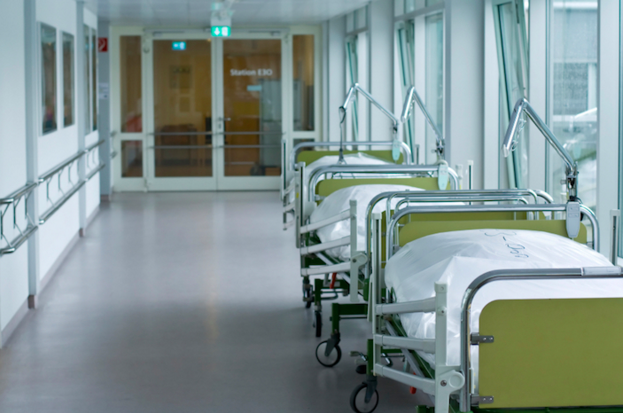
Hospitals can generally anticipate an increase in patient volume following a disaster in the community. However, as disasters such as Hurricane Ida have demonstrated, this surge may persist even beyond the immediate influx of patients, especially if there is significant local damage. From dialysis centers to ambulatory care clinics to outpatient chemotherapy–if other health care facilities are inoperable, those patients will rely on the nearest hospital for their medical needs.
For a small hospital with already limited resources, this can be a tremendous stress. Yet as more emphasis is being placed on disaster preparedness, even small hospitals should take the steps to proactively meet these challenges.
An article in the Online Journal of Issues in Nursing discussed planning for patient surges by focusing on the four S’s: Staff, Stuff, Structure and Systems. Using this as a framework, the small hospital can be certain to address all of the key components.
Staff
Clearly when a hospital has more patients, more staff will be needed to provide patient care. Every hospital should develop an emergency staffing plan that can be implemented as needed during a crisis situation. Both clinical and non-clinical staff will be needed to work additional shifts or be on-call as necessary. Make certain to have a printed list of all workforce members and pertinent contact information in case computer systems are down.
Small hospitals should also have arrangements with other nearby healthcare facilities to help provide supplemental staff if needed. Consider other community and volunteer resources as well to assist with non-clinical duties.
Stuff
Stuff refers to the additional supplies that will be needed during a disaster. The hospital should have a backup supply of extra equipment that can be used to accommodate the increased number of patients. This includes cots, IV supplies, oxygen tanks and portable suction equipment. Keep in mind that patient care may occur in areas that are not routinely equipped for it, so battery-powered and manual devices will be useful. Extra personal protective equipment for staff members will be needed as well.
Maintain a stockpile of the most commonly used pharmaceuticals. Keep a log of expiration dates, so that medications are cycled back into regular rotation before they are no longer usable.
As with staffing, mutual aid agreements with other hospitals can be an excellent source of needed supplies during a disaster.
.
Structure
The structural component involves identifying additional locations within the hospital where patients can be treated, as well as nearby facilities that can be set up as alternate care areas in an emergency. Additionally, during a patient surge, stable patients may be able to be discharged to open up beds for the more acutely ill or injured. During the planning period, determine if there are other nearby locations where discharged patients can be moved until arrangements can be made to get them home.
Systems
Every disaster preparedness plan should involve the creation of an incident command system and explain how to activate it in a disaster. The incident command system will clearly define who is in charge and provide a standard operating procedure for the entire process.
A successful plan must also establish secondary means of communications if normal means are interrupted. During a disaster power lines may be down and telephones may not function, yet the hospital needs to communicate internally and with state and local authorities. Make sure your communication system includes things such as satellite phones, citizen band radio or walkie-talkies.
Preparing for a patient surge is challenging and requires the coordination of many moving parts. With proper planning, a small hospital can continue to deliver safe patient care amidst the crisis.
Editor's Note: The blog was previously published in Dec 2015. It has been updated with recent information.














